Diversi tipi di rumore en
Da "Fisica, onde Musica": un sito web su fisica delle onde e del suono, acustica degli strumenti musicali, scale musicali, armonia e musica.
Jump to navigation Jump to searchTypes of noise
In everyday language, the word "noise" indicates something indistinct and chaotic. However, in a scientific context, various types of noise can be quantitatively characterised by studying their spectral content. The classification of noise is of fundamental importance in the study of all signals that contain random components and is heavily used in sound technology, as is illustrated in the following paragraph.
For a discussion on the differences between sound and noise, see the page Sound or noise?
White noise
White noise, which is analogous to white light, is the overlapping of the electromagnetic waves of all visible frequencies, if a noise is made up of a roughly "flat" spectrogram with waves of all frequencies and similar intensity at each frequency, it is called white noise. White noise, with its high-frequency "shrill" sound, has an excess of brightness that is very annoying. If you wish to listen to an example, click on the audio file below.
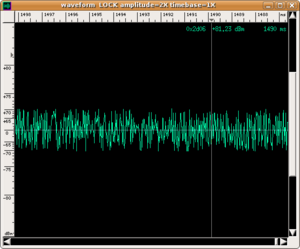
|
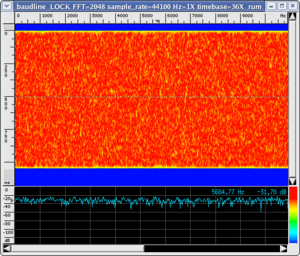
|
|
Alternatively, you can hear an example by connecting to our virtual laboratory and selecting Wave forms: Noise. Observe the extension of the spectrum on all the frequencies with a variable amplitude (remember that intensity is proportional to the square of the amplitude) but, on average, constant in the various regions of the spectrum. A remark: the applet is programmed only to generate sounds having multiple fundamental frequencies, therefore, what you are hearing is not true white noise, which should contain the full range of frequencies. The impression of hearing a true noise depends on the fact that, as explained on the related page, creating a periodic wave by overlapping frequency waves (and, therefore, different periods), the overall period of the wave is the minimum common multiple of the component periods. For such waves, that period is so long that:
- on a perceptive level, we cannot get any sensation of repetition (the period is too long).
- on a graphic level, the wave form associated with the fake white noise appears to have no periodicity (which it does have but on a very long time scale).
Coloured noises
There are various types of "coloured" noises, which are characterised by having several components of the spectrum more prevalent than others. For example:
-
pink noise, which has larger amplitudes (and, therefore, intensities) at low-frequency partials. It can be obtained from white noise by filtering out the high frequencies. Pink noise is often created according to the following rules (even if it is a bit of an oxymoron to state rules for creating a random event such as noise):
- loudness decreases when passing from one octave to another as the inverse of frequency. This means that it is halved when passing from one octave to another (in the logarithmic scale this is equivalent to an attenuation of 3 dB).
- the intensity profile within an octave is repeated for each octave.
It seems that noise built this way has relaxing properties similar to many natural sounds (rain, waterfalls, etc.). There are even CDs with pink noise!
You can try to build pink noise with the Fourier applet by varying the amplitudes by 1.5 dB in such a way that the intensity, which is proportional to the square of the amplitude, decreases by 3 dB per octave. The first octave includes one partial, the second two, the third four, the fourth eight, etc. You will find the results very disappointing: the further regularisation introduced in the spectrum (apart from the one caused by the software itself) will not allow us to mimic the randomness that a noise, even a pink one, should have.
Pink noise is used during recordings to enhance low-frequency sounds because at those frequencies our ears suffer from a reduction of sensitivity (for more on this topic, see the page on isophonic curves)
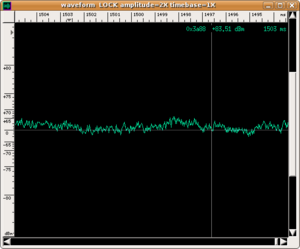
|
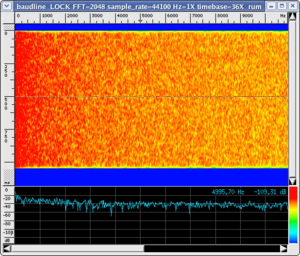
|
|
This type of noise contains more dominant low frequencies than pink noise. Its intensity decreases from one octave to another as the inverse of the square of the frequency (with an attenuation of 6 dB in the logarithmic scale). Brown noise sounds like the rumbling of thunder.

|
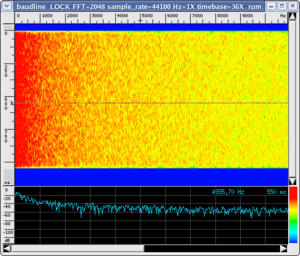
|
|
Red noise contains low frequencies with even higher intensity (without precise mathematical rules as with pink and brown noise). It sounds like a very low rumble (similar to a subway train or the noise of a motor that causes walls to vibrate due to resonance) and is at the lower threshold of audible frequencies. It is often used in electronic music and film soundtracks.
This sound is the complement of pink noise. High frequencies are its strongest spectral components with an increment in loudness of 3 dB per octave. It is obviously obtained by filtering out the low frequencies. It sounds like a shrill, artificial hiss.
This is the complement of brown noise and its spectral content is the highest at high frequencies. Its loudness increases by 6 dB per octave. Its hissing effect is even more irritating then that of blue noise.
In-depth study and links
- The terminology used for noise comes from the spectrum of electromagnetic waves. We encourage you to visit the corresponding page to fully appreciate the analogy with those waves.
- Many sound phenomena that we classify as noise are more due to the "confusion" perceived by our auditory system rather than the spectral composition of the sound phenomena themselves. Visit the page on critical bands and beats, if you wish to hear some examples.

